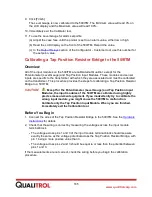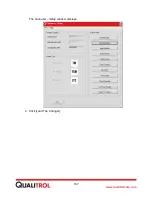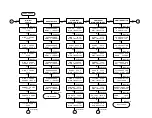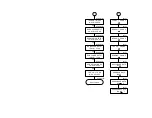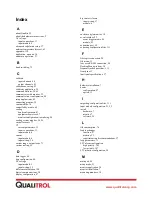
175
www.qualitrolcorp.com
Q:
What do I do if there isn’t a Transformer Heat Run Test Report?
A:
First, call the transformer manufacturers to see if they have a copy of the test report.
If they do not, ask if they have a test report for a similar transformer type or if there
are any specifications mounted directly onto the transformer. If none of this
information is available and this is a retrofit project, do the following:
1. Read the mechanical winding gauge and subtract the oil measurement.
2. Measure the current coming directly off the instrumentation CT.
3. Enter these two values into the remote software.
If you select method 3, the closer to full load that the transformer is running, the
more accurate the values for entering into the system.
Q:
What is the difference between failsafe and non-failsafe for a relay?
A:
In the 509ITM, Qualitrol uses Form C relays. These relays have three contacts:
normally open, normally closed, and common. When the monitor has no power
applied, the common and normally closed contacts are shorted together, while the
common and normally open contacts are open.
For a non-failsafe relay, when power is applied to the 509ITM, the relay contacts are
shorted on the common/normally closed side and open on the common/normally
open side. (This is the same situation as if no power was supplied to the monitor.)
When the controlling input signal reaches the setpoint, the relay changes states so
that the common/normally open side is shorted (closed) and the common/normally
closed side is open. A non-failsafe relay only changes states when the setpoint is
exceeded. This is the reason
the “trip” function is normally assigned to a non-
failsafe relay.
When power is applied to the monitor with a failsafe relay, it immediately changes
states so that the common/normally open side is shorted together and the
common/normally closed side is open. If the controlling signal reaches the setpoint,
or if power is removed from the monitor, the relay changes back to the
common/normally closed state being shorted and the common/normally open state
being open. It is for this reason that most alarms and cooling systems are
connected to failsafe relays, because they will actuate if the setpoint is exceeded or
if the monitor loses power.
Q:
How does the Latching Relay function work?
A:
A latched relay will actuate in the same manner as a non-latching relay when the
setpoint conditions have been exceeded. The difference between a non-latching
relay and a latching relay is that a non-latching relay will return to its pre-existing
state when the setpoint conditions are no longer being exceeded. A latching relay
will remain latched. A latched relay may only return to its pre-existing state if the
setpoint conditions are no longer exceeded and the operator presses the
RESET
button on the front panel of the unit during the normal scrolling operation.
Summary of Contents for 509ITM Series
Page 26: ...26 www qualitrolcorp com Current Input Wiring...
Page 55: ...55 www qualitrolcorp com 3 Continue with the setup procedure...
Page 101: ...101 www qualitrolcorp com...
Page 144: ...144 www qualitrolcorp com The following window will appear...
Page 167: ...167 www qualitrolcorp com The Customer Setup window displays 4 Click Load Tap Changer...
Page 178: ...178 www qualitrolcorp com Appendix...
Page 179: ......
Page 180: ......
Page 181: ......





